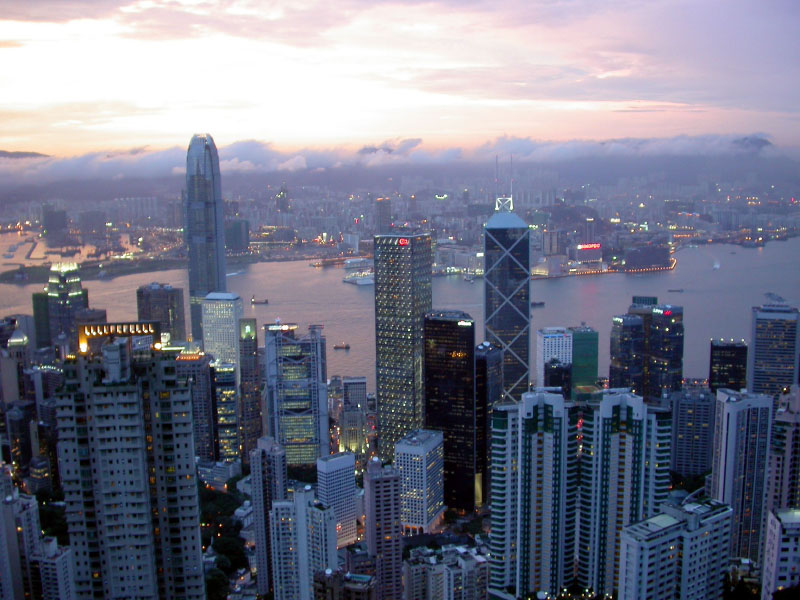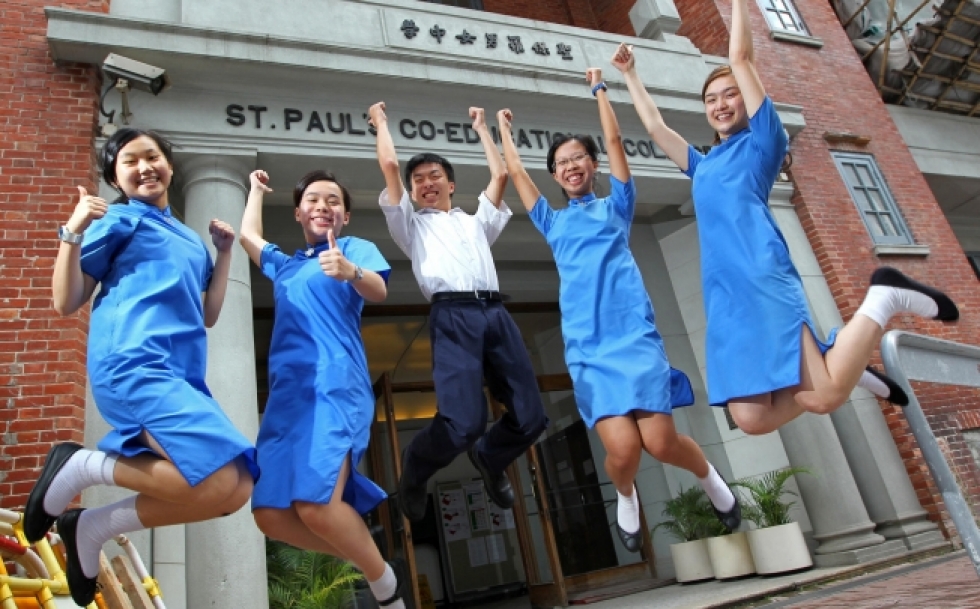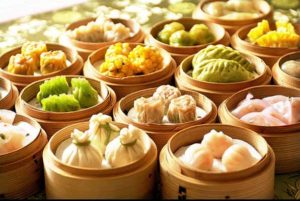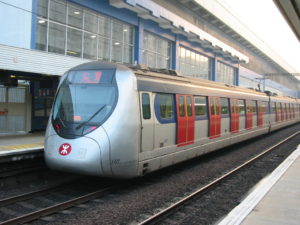Hong Kong is an international financial centre, with strengths in financial services, trade, tourism, transport, communications, and as a regional hub for international business, and cultural hub with world-class infrastructure. We have prepared some information for living in Hong Kong and to experience the wonderful and extraordinary city!
Society
Hong Kong is located in the County, southeastern, eastern side of the Pearl River estuary, West is foreign to Macau, Shenzhen Special economic zone in the North are closely linked, about 140 kilometers from Guangzhou, is the development of fast-growing East Asian region and the Pearl River Delta hub, geographical condition is superior. Hong Kong consists of Hong Kong Island, Lantau Island, Kowloon peninsula and the New Territories (including 262 Outlying Islands). Hong Kong is Asia’s bustling metropolis, with regional and international financial centre, one of the privileged natural deep-water harbour, and from 1842 to 1997 is the United Kingdom’s colony and revert to China on July 1, 1997. Hong Kong has an area of 1104 square kilometers, a population of over 7 million, major industries include retail trade, tourism, real estate, banking and financial services, trading services, social and personal services. Advantages of intelligent Chinese and Western social system in Hong Kong combined, with clean government, good law and order, is famous for its liberal economic system and improve the rule of law.
Hong Kong Education Bureau:
http://www.edb.gov.hk/en/index.html
Post-secondary Education:
http://www.edb.gov.hk/en/edu-system/postsecondary/index.html
Secondary School Education:
http://www.edb.gov.hk/en/edu-system/primary-secondary/secondary/index.html
Primary School Education:
http://www.edb.gov.hk/en/edu-system/primary-secondary/primary/index.html
Kindergarten Education:
http://www.edb.gov.hk/en/edu-system/preprimary-kindergarten/about-preprimary-kindergarten/index.html
Other Education Programmes:
http://www.edb.gov.hk/en/edu-system/other-edu-training/vocational-other-edu-program/index.html

Education

The Hong Kong Government promotes free education in primary and secondary education. Hong Kong law stipulates that in the condition of Government to provide places for all school-age children, parents take their children to school for each child is taught to the obligation. Since 1971, the Hong Kong Government to introduce free education in primary schools, beginning in September 1978, to provide all primary school students with high school degrees, and most teachers in Government and aided secondary school cancellation costs and similar expenses in junior high school levels, in order to achieve universal access to secondary education. Some schools also offer services and free lunches to schoolchildren transportation.
Secondly, the Government budget to education as a priority item. Funding for education from 1975-2012 17% of the average budget, expenditure on education accounts for Hong Kong’s gross domestic product averaged 3%, the proportion of total expenditure on education, is close to or even more than Canada and the United Kingdom, and Australia and Switzerland and other developed countries. Third, pay attention to technical education and adult and vocational education. In order to meet the requirements of the business sector, the Hong Kong Government pay attention to the development of various types of industrial and technical education in order to train technicians and workers. Division of night by government bodies such as driven by every year 500,000 people in Hong Kong to apply for various adult vocational and technical education courses, they are subsidized by the Government. As an international student studying in Hong Kong, annual tuition fees of approximately HK$42,100; for accommodation, which costs between HK$10,000 to HK$30,000, it is estimated that the annual cost is about HK$100,000. Being the temporary identity card of new immigrants also have the same education benefits of permanent resident of Hong Kong.
Hong Kong Education Bureau: http://www.edb.gov.hk/en/index.html
Post-secondary Education:
http://www.edb.gov.hk/en/edu-system/postsecondary/index.html
Secondary School Education:
http://www.edb.gov.hk/en/edu-system/primary-secondary/secondary/index.html
Primary School Education:
http://www.edb.gov.hk/en/edu-system/primary-secondary/primary/index.html
Kindergarten Education:
http://www.edb.gov.hk/en/edu-system/preprimary-kindergarten/about-preprimary-kindergarten/index.html
Other Education Programmes:
http://www.edb.gov.hk/en/edu-system/other-edu-training/vocational-other-edu-program/index.html
Medical
We value each and every customer’s requirements, providing reception study, such as full service support, carefully examine the data in time and follow up the progress. Hong Kong has world level of medical service, regardless of is technology, and equipment or medical personnel, quality are and Europe, advanced national par, is Hong Kong social welfare of main project is one of, Government to tie social economic development of needs, gradually improved on public of medical health service, in increased medical institutions of while, note expanded equipment, improve disease cure of level, makes medical health career to universal and modernization. The medical and Health Department came into operation in 1977, medical services branch. The territory is divided into 5 constituencies, and divided into 5 regional central hospital as a general hub for medical services in the area and contact center, together with the areas of General and specialist hospitals, clinics set up an integrated network of regional medical services. As long as Hong Kong people travelling on ID cards, and payment of a small fee to obtain medical services in government hospitals and subvented hospitals, generally of low income residents and some middle-income people mostly in these two types of welfare hospital.
Hospitals and clinics in Hong Kong:
http://www.gov.hk/en/residents/health/hosp/
List of Registered Private Hospitals:
http://www.dh.gov.hk/en_chi/main/main_orphf/list_ph.html
Hospital Authority:
http://www.ha.org.hk/visitor/ha_visitor_index.asp?Content_ID=10084&Lang=ENG&Dimension=100&Parent_ID=10042

Climate

Hong Kong’s subtropical climate zones, but on average nearly half the time in temperate climates. Winter temperatures can drop to below 10 degrees Celsius, you can back up to 31 degrees Celsius in the summer. Rainfall is concentrated between April to September, accounting for about 90% of annual rainfall.
The Hong Kong Observatory website: http://www.hko.gov.hk/contentc.htm
Livelihood

Useful Tips
- Hong Kong uses traditional Chinese characters (traditional Chinese), but for reasons of computer systems, parts are actually Japanese fonts used, and Taiwan use traditional characters is not the same.
- Hong Kong traffic rules with the Mainland and other countries are different: cars drive on the right.
- Taking the escalator in Hong Kong have “Left-Right State” rule, remember to stand on the right, pedestrians left to cater for those who are in a hurry.
- Please remember always to bring the temporary identity cards or identity document in Hong Kong, police may verify the identity, though seldom, but bring your ID will be removed from a lot of trouble.
- Electrical socket is different from the Mainland and other countries with Hong Kong, the use of electrical appliances need to be prepared the right plug.
- The prices for computers, cell phones and other electronic appliances available in Hong Kong are usually lower than those in the Mainland, as the RMB currency continues to appreciate significantly, this advantage tourists for purchasing. Many telecommunication providers will offer promotion discount for new customers, however they often need a longer binding contract, so it is suggested that you can compare different telecommunication providers before getting into a contract.
- It is convenient to have an Octopus card, as it can ride most transport, and many restaurants and stores accept Octopus payment (e.g. KFC, and McDonald’s, and Café’de Carol, Park’ N Shop, Welcome, 7-11, and OK Store). Besides, they almost have Automatic Add Value Service “AAVS” for Octopus card. The AAVS system locates in MTR stations (except KCR light rail) and you can add value for most of the stores with Octopus card reader.
- If you are child, students or senior citizens, using personalised Octopus card can even enjoy good discount price for riding in the MTR.
The Hong Kong Tourism Board : http://www.discoverhongkong.com/en/index.jsp
Hiking in Hong Kong : http://www.oasistrek.com/
Shopping
 Hong Kong is a free port, known as “shopping paradise”, a place where people like to go shopping, the vast majority of goods without customs duties, they are shipped all over the world for selection. Hong Kong and Kowloon district have large shopping malls, such as Harbour City in Tsimshatsui, is well known for shopping. Apart from large department stores, there are variety of shops and restaurants, some of them have well equipped entertainment facility, they are good for both shopping and leisure. As the advantage of industry centralized management, customers can have more choices, for example, computers and related products, Sham Shui Po MTR station adjacent to the Golden Arcade and the Golden Arcade are in greatest concentration. More household appliances and cameras in Mong Kok and Causeway Bay, but appropriate to a reputable store (such as red junk affixed with the Hong Kong Tourist Association) or large department store. Hardware mechanical shop focused on Canton Road, Mong Kok MTR station of three street segment. Fa Yuen Street, Mong Kok Road, Prince Edward Road, is a paradise for fruit, fashion and commodity vendors. Period after Tung Choi Street, Argyle Street, is known for its “women’s Street”, and similar to the Tin Hau Temple in Yau Ma Tei on both sides of the temple, Temple in the evening and have cooked food and fortune-telling stall mixed, more operatic singing near the temple, like a bazaar by the general public.
Hong Kong is a free port, known as “shopping paradise”, a place where people like to go shopping, the vast majority of goods without customs duties, they are shipped all over the world for selection. Hong Kong and Kowloon district have large shopping malls, such as Harbour City in Tsimshatsui, is well known for shopping. Apart from large department stores, there are variety of shops and restaurants, some of them have well equipped entertainment facility, they are good for both shopping and leisure. As the advantage of industry centralized management, customers can have more choices, for example, computers and related products, Sham Shui Po MTR station adjacent to the Golden Arcade and the Golden Arcade are in greatest concentration. More household appliances and cameras in Mong Kok and Causeway Bay, but appropriate to a reputable store (such as red junk affixed with the Hong Kong Tourist Association) or large department store. Hardware mechanical shop focused on Canton Road, Mong Kok MTR station of three street segment. Fa Yuen Street, Mong Kok Road, Prince Edward Road, is a paradise for fruit, fashion and commodity vendors. Period after Tung Choi Street, Argyle Street, is known for its “women’s Street”, and similar to the Tin Hau Temple in Yau Ma Tei on both sides of the temple, Temple in the evening and have cooked food and fortune-telling stall mixed, more operatic singing near the temple, like a bazaar by the general public.
Shopping malls and department stores in Hong Kong :
http://www.discoverhongkong.com/eng/shop/where-to-shop/index.jsp
Harbour City, Hong Kong :
http://www.harbourcity.com.hk/
Gourmet
 Hong Kong brings together variety of foods from all over the world, various flavors of restaurants, guesthouses, lively places such as Mong Kok and Causeway Bay, Tsim Sha Tsui East and Kowloon City. There are full of Asian cuisine restaurants all over here, spicy Thailand soup, spicy India Curry, plump Korea BBQ, fresh Viet Nam Salad Rolls, delicious Japan sushi specialties and much more. Hong Kong’s Chinese food restaurant, cuisine offers all over China, especially Cantonese cuisine restaurant, and other authentic cuisine including Chaozhou cuisine, Hunan cuisine, Sichuan cuisine, Beijing cuisine and Shanghai cuisine, there are exquisite and refined vegetables. With traditional Cantonese Dim sum for breakfast tea is also a good choice. Traditional local cuisine in Hong Kong with Cantonese cuisine, Dim Sum is especially popular for foreigner, Chaozhou and Hakka cuisine, traditional dishes at the Festival of indigenous residents in the new territories is a casserole. Seafood is also a common dish here, and a dishes called “Typhoon Shelter Crab” is with special taste.
Hong Kong brings together variety of foods from all over the world, various flavors of restaurants, guesthouses, lively places such as Mong Kok and Causeway Bay, Tsim Sha Tsui East and Kowloon City. There are full of Asian cuisine restaurants all over here, spicy Thailand soup, spicy India Curry, plump Korea BBQ, fresh Viet Nam Salad Rolls, delicious Japan sushi specialties and much more. Hong Kong’s Chinese food restaurant, cuisine offers all over China, especially Cantonese cuisine restaurant, and other authentic cuisine including Chaozhou cuisine, Hunan cuisine, Sichuan cuisine, Beijing cuisine and Shanghai cuisine, there are exquisite and refined vegetables. With traditional Cantonese Dim sum for breakfast tea is also a good choice. Traditional local cuisine in Hong Kong with Cantonese cuisine, Dim Sum is especially popular for foreigner, Chaozhou and Hakka cuisine, traditional dishes at the Festival of indigenous residents in the new territories is a casserole. Seafood is also a common dish here, and a dishes called “Typhoon Shelter Crab” is with special taste.
With the influence of western food culture, you can easily find bars & coffee shop in Central, Wan Chai and Tsim Sha Tsui. For fast food, American-style fast food e.g. McDonald’s and Kentucky Fried Chicken can also be found easily everywhere, besides, Hong Kong has also developed its own style of fast food restaurants, including Cafe de Coral, Fairwood and Maxim’s, and etc.
Hong Kong attracts people and food from world around, and we have been able to keep our traditional foods and snacks, traditional foods like rice cakes, dumplings, lotus seeks cake, almond cake, peanut cake and sesame cake; and snacks like spicy fish-ball, egg tart and pancake are also popular.
Hong Kong Restaurant Guide : http://www.openrice.com/
Transport
 Mass transit railway “MTR” is the main transportation network in Hong Kong, they have been merged to form one of the most efficient and far-reaching railway networks in Asia. MTR operates ten main commuter lines serving Hong Kong Island, Kowloon and the New Territories. Among them, the East Rail Line connects to the boundary at Lo Wu and Lok Ma Chau stations for travel between Hong Kong and Shenzhen.
Mass transit railway “MTR” is the main transportation network in Hong Kong, they have been merged to form one of the most efficient and far-reaching railway networks in Asia. MTR operates ten main commuter lines serving Hong Kong Island, Kowloon and the New Territories. Among them, the East Rail Line connects to the boundary at Lo Wu and Lok Ma Chau stations for travel between Hong Kong and Shenzhen.- A Light Rail network serves the local communities in the North West New Territories, while a fleet of buses provides convenient feeder services.
- Bus: The New Bus, mainly serves for Hong Kong Island route; The Kowloon Motor Bus Co, “KMB”, mainly serves for Kowloon and the New Territories; both of them cover the route services between HK side to Kowloon side and airport route; The New Lantao Bus “NLB”, The major service area of NLB is Lantau Island, and they also operate a cross-border bus route B2, which runs from Yuen Long MTR station to the border checkpoint at Shenzhen Bay.; The Long Win Bus Company Limited “LWB”, is the subordinates company of the KMB, operating route between New Territories.
- Minibus: Public Light Buses “PLBs” are minibuses with not more than 19 seats. Some PLBs are used on scheduled services (green minibuses) and others on non-scheduled services (red minibuses).
- Tram: The Hong Kong Tramways operates 6 main routes running between Kennedy Town and Shau Kei Wan (only in North side of Hong Kong Island), it is good for sight-seeing and ride for a short distance.
- Taxi: In Hong Kong, different taxis have designated operating areas:
http://www.td.gov.hk/filemanager/en/content_449/taxi%20boundary%20map%20(a3)%2006%20(01_07_07)%20e.pdf- Urban taxis (red taxis) are available for hire throughout Hong Kong (except Tung Chung Road and roads in South Lantau).
- New Territories taxis (green taxis) are available for hire in-
Tuen Mun District / Yuen Long District / Tai Po District / North District / Ma On Shan District / Most areas of Sai Kung District (except Tseung Kwan O New Town / Lok Ma Chau Control Point (from 11:00 pm to 06:30 am on the following day) / Lok Ma Chau Spur Line Public Transport Interchange / Shenzhen Bay Port Hong Kong Port Area, they are also permitted to carry passengers along specified routes to/from the following locations: Passenger Terminals and the Ground Transportation Centre of the Hong Kong International Airport in Chek Lap Kok / Tsing Yi Station of Airport Railway / Tsuen Wan MTR Station / Prince of Wales Hospital / Tseung Kwan O Hospital / Sha Tin Racecourse / Shun Lee Estate in Kwun Tong / Hong Kong Disneyland / Hang Hau MTR Station - Lantau taxis (blue taxis) are available for hire on Lantau Island and in Chek Lap Kok
- Ferries: most of the ferry services are provided by licensed ferry operators. There are now 11 ferry operators providing 18 licensed passenger ferry services to outlying islands and across the Harbour as at 1 July 2014. Still, there remains two franchised ferry services operated by “Star” Ferry plying between Central and Tsim Sha Tsui as well as between Wan Chai and Tsim Sha Tsui.
Transport Department: http://www.td.gov.hk/en/transport_in_hong_kong/public_transport/index.html
Hong Kong eTransport: http://hketransport.gov.hk/index.php?golang=EN
MTR:http://www.mtr.com.hk/en/customer/main/index.html?notice=read
Light Rail:http://www.mtr.com.hk/en/customer/services/routemap_index.html
Bus:
KMB: http://www.kmb.com.hk/en/
New Bus: http://www.nwstbus.com.hk/home/default.aspx?intLangID=1
NLB: http://www.newlantaobus.com/
LWB: http://www.lwb.hk/en/
Minibus: http://www.16seats.net/eng/rmb/rmb.html
Tram:http://www.hktramways.com/en/
Ferry : http://www.td.gov.hk/en/transport_in_hong_kong/public_transport/ferries/service_details/index.html
Welfare
 Child benefits and service
Child benefits and service
For any Hong Kong residents, if you have 3 or more children can be applied to register with the Department of kindergarten, you can apply for the Hong Kong Department of education voucher scheme, which is for fee remission.
Youth welfare and service
For primary and secondary schools students, they can apply funding schemes under the student financial assistance agency of the Government. The funding scheme subsidy is divided into student fees, student travel subsidy fee allowance, allowance for student internet, grant was issued to the students themselves, through bank accounts credited to their parents or guardians.
Senior citizens welfare and service
The Government provides Social Security Allowance Scheme and Senior Citizen Card Scheme for Hong Kong residents who are ages 65 or above. The schemes including Old Age Living Allowance (aged 65 or above and with assets not exceeding a prescribed limits), Old Age Allowances (aged 70 or above) and Guangdong Scheme. The Hong Kong Housing Authority and the Hong Kong Housing Society are also offer different types of public housing subsidies to the elderly to address their housing needs, and several housing schemes that grant priority to elderly public rental housing applicants.
Family service
Family service center work are: family and interpersonal relationship counselling services help them resolve difficulties such as schooling, housing, employment and home help services and so on. Health care service is sponsored by government investment, visit fee and hospital fee is simply charge less to Hong Kong residents. Apart from hospital and clinics, the Government also provides health care services to the whole community. Family health service consists of three elements: the reproductive-aged women with antenatal and postnatal guidance and services, vaccine immunization of children, provide health care, education and counselling for pregnant women, or troubleshooting over the phone, or through the family planning Association of marriage and other aspects of service delivery.
The Social Welfare Department of Hong Kong: http://www.swd.gov.hk/en/index/
Useful Links

- the Hong Kong Tourism Board: http://www.discoverhongkong.com/eng/index.jsp
- The Hong Kong Government News: http://www.news.gov.hk/eng/index.html